Edible Landscaping With Fruit Trees Is Faster & Easier Than You Think
If you're like me, you'd like a small orchard with one of every kind of fruit tree imaginable growing in your yard!
But unless you have a huge yard, you may have to choose just a few of your favorites.
And though there are "rules" for what to plant where and how far apart, all us die-hard gardeners know that such "rules" were made to be broken -- or at least stretched a tad.
There are plenty of creative ways to crowd in one more tree without hurting a thing. Some growers even plant 2 plums in one hole for example, one to pollinate the other!
Though I must admit, it could get a little crowded!
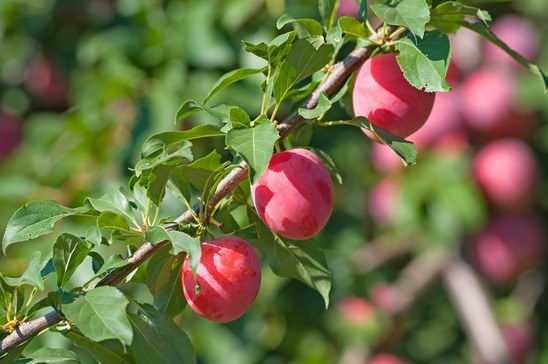
Delicious plums can be grown in zones 4-9.
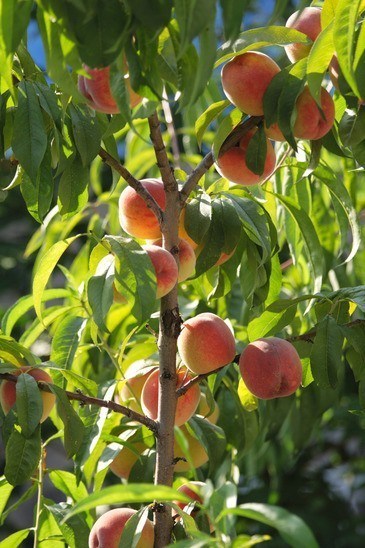
Peaches and Nectarines are super easy
to grow abundantly in zones 4-9.
How soon Can I have fruit?
There's a saying among old-timers that goes, "the first year it sleeps, the second year it creeps and the third year it leaps."
Rule of thumb is it takes three years to get your first fruit, and five years to get a small crop. Most 3-gal fruit trees sold by reputable nurseries are about 2-2.5 years old. So in reality, you will only have to wait one or two seasons for the plant to get established to start seeing the tree produce.
Many of the 3-gal trees we've sold through our nursery have had blossoms or tiny fruit already set on them. While it is very tempting to let the tree produce the first year, but if you want it to grow quickly, it much is wiser to pluck the fruit off the first year or even two years, and encourage growth instead.
The second year your tree bears fruit, you can expect to get one or two handfuls to harvest -- that's like our 7gal or super 7g trees. But the third year -- that's when you should get a few dozen pieces of fruit -- that would be comparable to our 15g trees. And from there it just gets better, most years.
Still, it's a good idea to plant a few more trees than what you think you can eat, because there will be "off" years where you don't get as much harvest. And during the years of abundance, there's plenty to share with family and friends.
Where Do I Plant?
Consider the final height of the tree when choosing where to plant.
A standard height would be about 15-30' at maturity, depending on how much you prune and maintain the tree. A dwarf tree may only reach 10-15'.
Since fruit bearing trees need close to 8 hrs of full sun per day, consider what the canopy will look like at maturity when you choose your location, so that you'll still have sun on your tree.
You'll also want to plant at least 7' from the eve of your house on average to prevent damage to your roof and encourage air circulation around the exterior of the house.
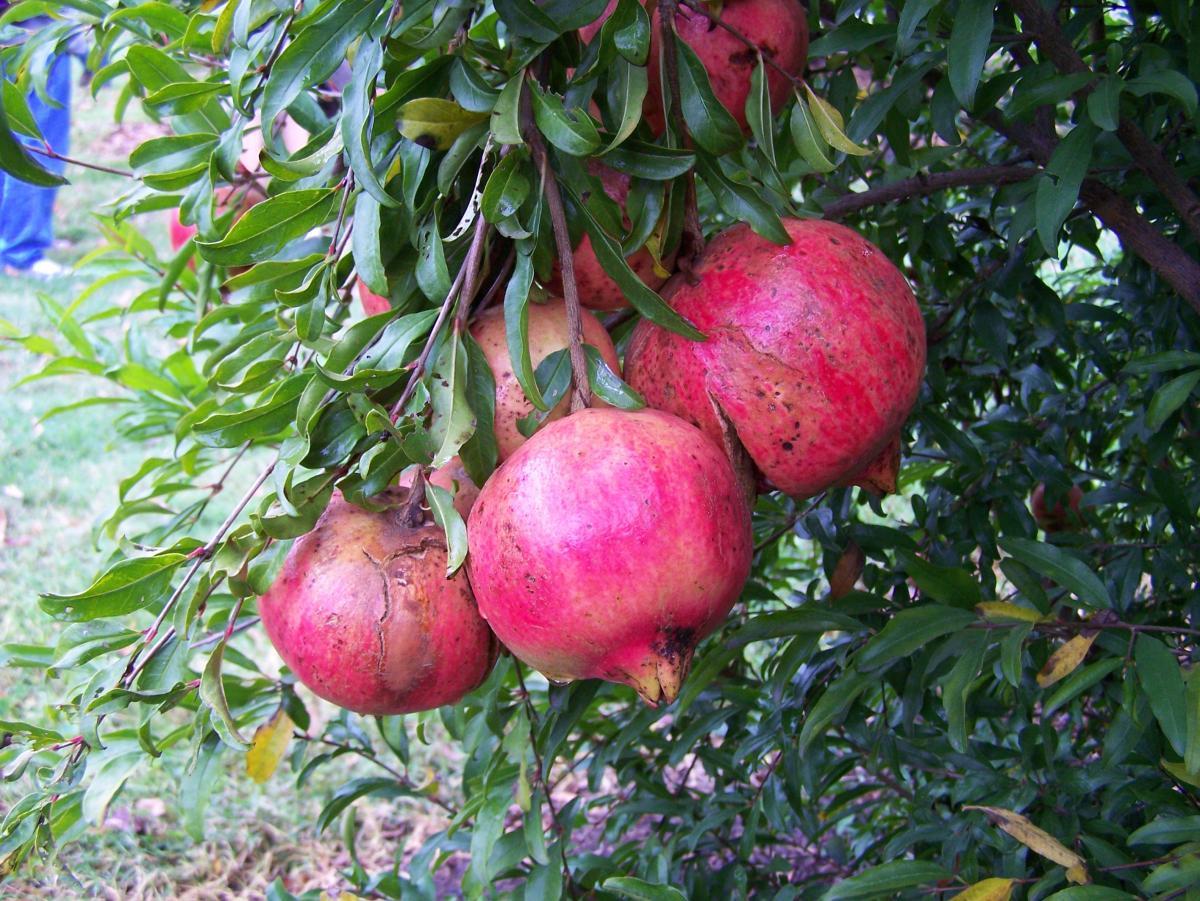
Pomegranate fruit trees can be
grown as far south as zone 9.
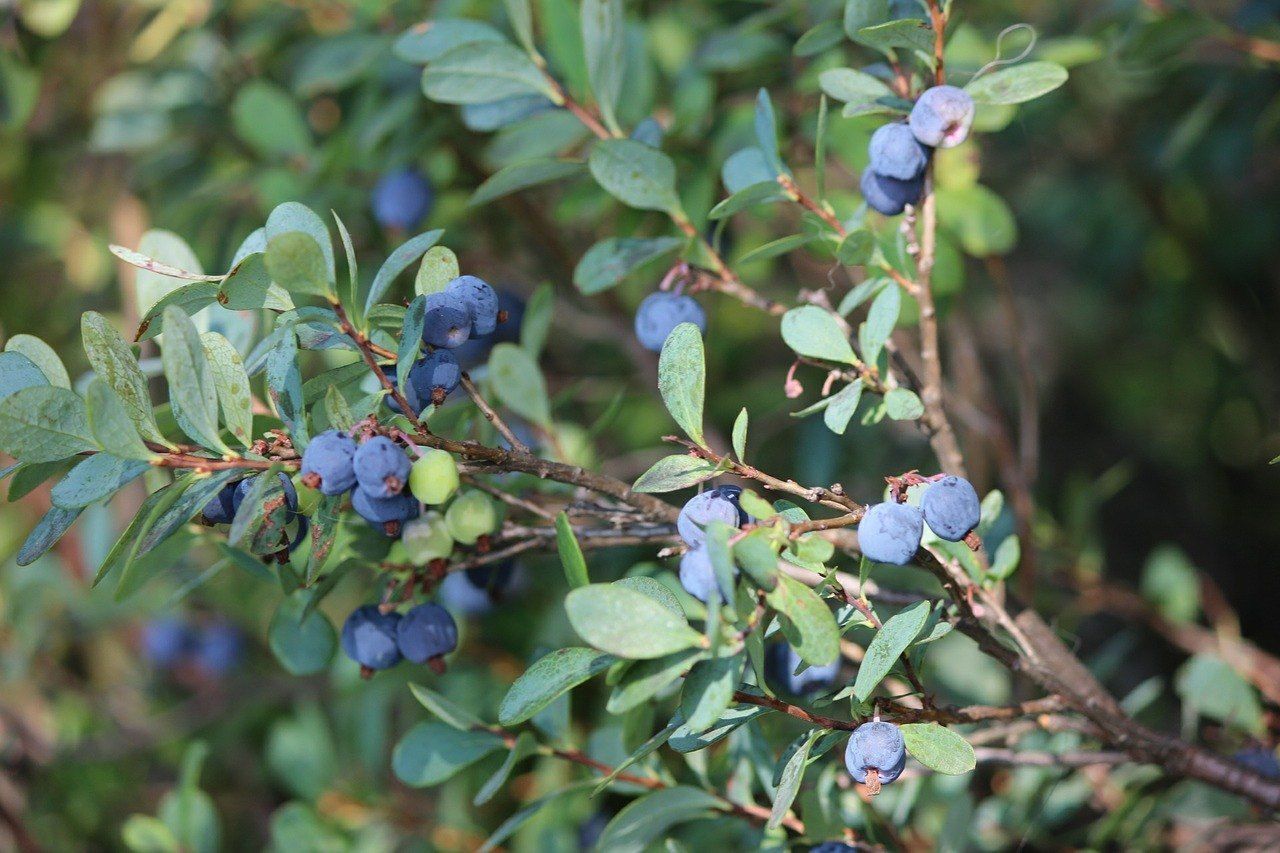
Blueberries grow in clusters on a
bush and are fun to pick.
Most fruit trees prefer well drained soil, not too wet but not too dry either, so think mulch. And they like good air circulation: if the air is stagnant, it'll get too hot or too cold.
They generally like a relatively neutral pH. Something like 6.5 to 7.5 pH is usually acceptable unless you're talking blueberries. So never plant a fruit tree directly in the path of pine needles and oak leaves. The acid from the pine or the tannic acid from the oak will kill the tree. Especially for fig trees -- they like it even more alkaline than most.
Blueberries, however, like it more acidic. Putting pine mulch around blueberries is actually helpful ! For most soils, you will also need to add a soil acidifier product: Epsoma makes one called "Soil Acidifier" that works great for us.
How much space do I need?
Planting fruit trees in the home landscape is often a different consideration than planting them in an orchard.
In the orchard, the grower needs to allow for big picking trucks between the rows and is focused on getting the highest possible yield per tree.
But in the home garden, the focus is more likely on "how many different kinds of fruit trees can I successfully grow in my limited space". It's more important to be sure there's room for the height of your tree, than to worry too much about planting too close together.
Apples and pears need an average of 20' on center, but fruits like peaches or nectarines can be planted as close as 10' apart if you haven't much space. Just get the dwarf varieties where available (mostly available only for tropicals) and do a little pruning.
You can get creative with the shapes of the trees to fit more into a small space. For example, a mulberry doesn't have to grow into a tall tree shape to produce a huge crop. Keep it trimmed as a big bush and it may fit where a tall tree won't. Same thing with a fig tree -- it doesn't have to grow tall if you don't have the space. Frankly, keeping it shorter makes it easier to reach the fruit.
Many homeowners are successfully breaking the spacing rules and practising intensive planting to get more out of their space. Placing two varieties of the same kind of fruit tree in the same hole has even been done, but you'll need to feed extra to keep them from running out of nutrition, and do a lot of creative trimming.
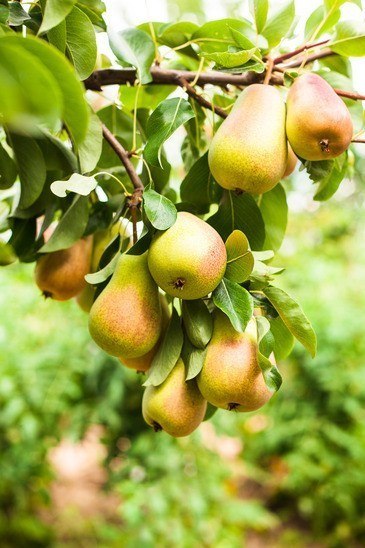
Pears can be grown in zones 4-9.
Just choose one suitable to your area.

Click on the Green Genie to download
our Magic Soil Formula!
How Do I Plant?
As a general rule, you want to dig a hole two to three times as large as your root ball. Fill the hole about halfway with rich, loamy, composted soil.
Since we're in Florida and everything is sandy even when it looks brownish-black, we always add in some soil amendments as well. Florida simply doesn't have the quantity of minerals found in other states. My hubby says it's because the dinosaurs never crapped here. But whatever the reason, the soil amendments help a lot.
(Check out our Magic Soil Formula if you want our secrets.)
Next, stand the fruit tree in the hole. Fill the remainder of the hole with a mixture of your composted soil and the native dirt. Try to keep the tree planted at the same depth it was in the pot, unless you see roots on the surface. Always cover any surface roots so they don't sunburn.
At the same time, it helps to start watering the dirt into the crevises of the roots of the tree. Don't overdo it, but the idea is to not end up with air pockets in the ground of the finished planting. Air pockets around tender roots will kill the tree.
It's important to keep your new planting moist, but not overly wet for the first few weeks. Water at least three to four times a week for the first year, especially if you have hot or dry summers. We water nearly every day in the nursery. Consistent water for 15 minutes a day on drip irrigation is really the best plan.
Nutrition is kinda like the old "gigo" rule: garbage in/garbage out. If you want tasty, healthy, nutritious fruit, feed your trees periodically with the right balance of soil amendments and (organic) fertilizers. Your trees will reward you with the tastiest fruit you ever ate.

Sweet Cherries can be grown in zones 4-8b
ask us about sweet-tart cherries suitable for zone 9
So What Can I Grow Here?
Choosing the right variety of a fruit can extend the traditional zone limitations of where it is commonly grown. Apples are generally grown in zones 3-7, but there are a few low chill varieties that can be grown in zone 8, and even zone 9 under ideal conditions. Nectarines and Peaches are more easily grown further south: zones 5-9 are typical, though a few have been developed for zones 9-10.
Apricots and Pears are most likely grown in zones 4-7, maybe 8.
There are a few low chill pears that are perfectly well suited to zone 9.
Plums are grown in zones 4-10 -- with the right cultivar. And Sweet Cherries are grown in zones 4-8. We have one variety of sweet-tart cherry suitable for zone 9, and for 9b there are a couple of other tasty choices.
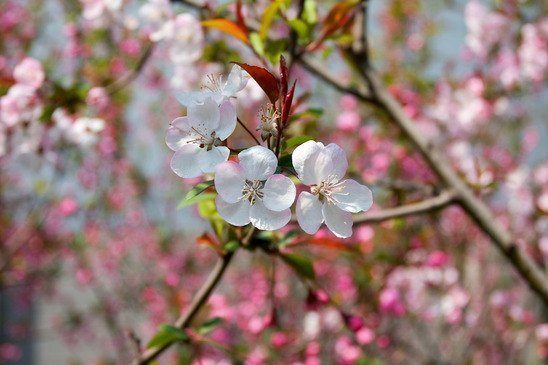
Ahh -- Beautiful Plum Blossoms

Banana trees need 12 leaves to set fruit.
What about tropical fruit?
Avocados, mangoes, guavas and papayas are much more tropical and likely to be zones 10-11. That said, there are a few Avocados that are cold hardy but that just means they can be grown in zone 9 or 8b, with some extra TLC.
There are even a few cold hardy bananas being introduced into zones 8-9 in the US. Most bananas are found in zones 10-11.
Bananas need time to grow at least twelve leaves before you can get fruit. Often that takes a growing season that lasts 10-14 months. So getting the common Cavendish to fruit in zone 9 means having a very mild winter, and protecting them from frost. You'll need to start the spring with at least 3-4 healthy leaves already in place by March 1. Hint: it takes perseverance and lots of blankets or even better is a plastic dome aka temporary mini-greenhouse for those bananas.
And you'll need a late start on the second winter for the fruit to completely ripen. Planting the trees in a micro-climate where they don't get as much cold as the rest of your garden gives you the necessary edge to pull this feat off.
There are some bananas that are more cold-friendly: Raji Puri & Raji Puri pineapple are sweet dessert bananas that will fruit in one summer more easily. They are slightly shorter trees as well, in the event that you'd like to put them in a greenhouse for year-around growing.
And then there's citrus:
Citrus is very zone sensitive. There are a few varieties of oranges that can be grown easily in zones 8b & 9, but most are better suited to zones 10-11. Ponkan Tangerine and Satsuma are two of the hardiest oranges, both tolerating hard freezes down to 15-18 degrees! We grow these in zone 8b, as well as farther south.
Even the Ruby Red grapefruit works in zone 9, though the commercial groves are warmly tucked into zones 10-11. Kumquats can easily be grown in zones 8-11.
The Key Lime, also known as the Mexican Lime, is the most requested of the lime varieties. But it is tricky to grow it as far north as zone 9. If you create a mini micro-climate for it, it can be done successfully. You'll need to give it protection from the north winds, either by planting a clump of evergreens to the north or by situating it next to a fence.
Citrus has become a bit pricey since the citrus greening disease crisis, but a 10 gal tree will often start bearing fruit the very next season after you plant it.
Buying an established specimen citrus tree from a trusted nursery is the best way to get a big tree that is suited for your area. If you buy from a big-box store, do your research first to know what varieties are suited to your area, because the chains tend to sell the same plant in all their stores, regardless of zone.
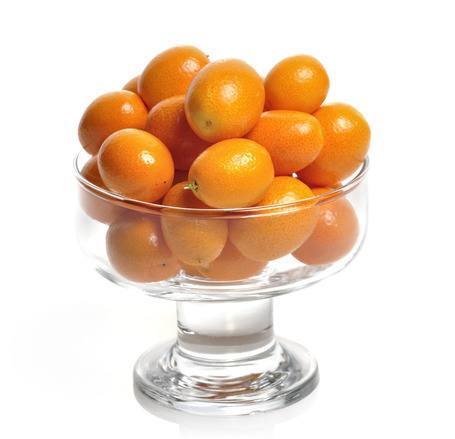
Live in zones 8-11? You can easily grow kumquats -- and they make awesome marmalade.
Wrap Up
Growing your own orchard can be fun and quite rewarding but a little planning is necessary to be successful. Do your research for your zone and start with proven varieties first. That way you'll have a taste of success to boost your confidence before you try to stretch the rules. Happy Gardening from the Green Genie!
Feel free to ask any questions either via email or phone -- and we'll answer as quickly as we possible.
